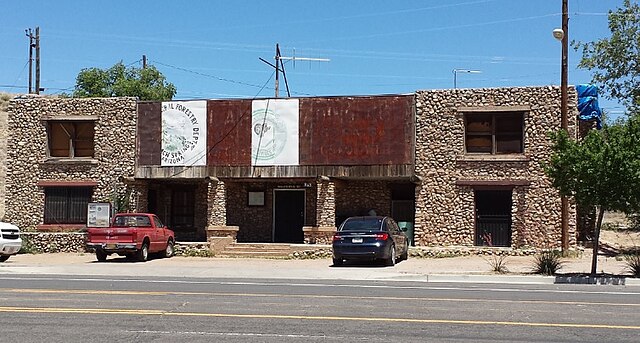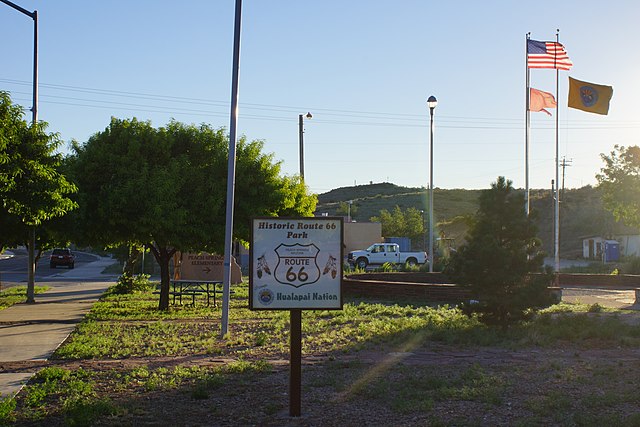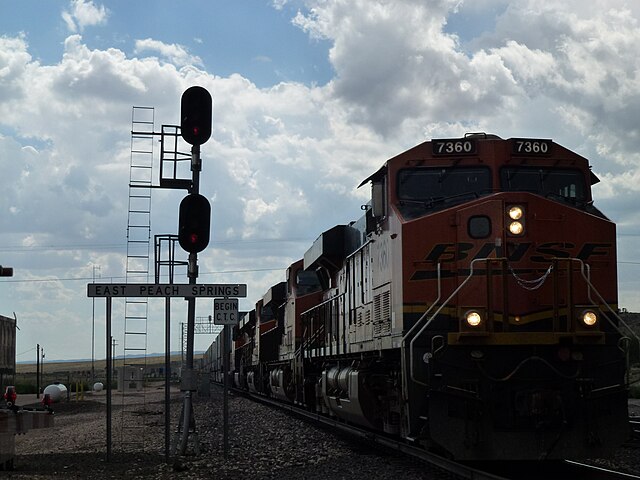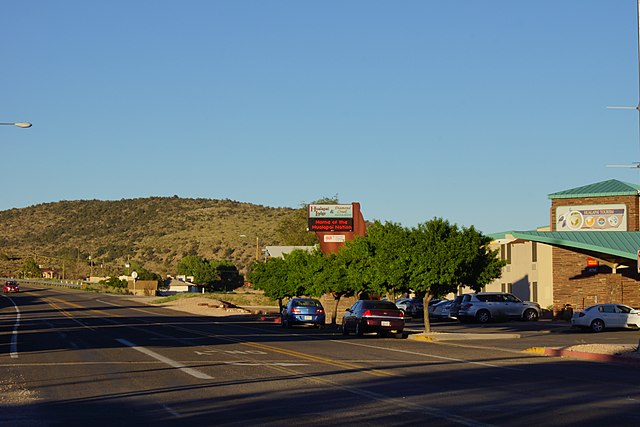Have you ever wondered what it’s like to stand on the edge of one of the world’s most magnificent natural wonders? Welcome to Peach Springs, Arizona – a hidden gem that serves as your personal gateway to unforgettable Grand Canyon experiences. This small town isn’t just a pit stop; it’s a destination where ancient Native American culture meets breathtaking natural beauty.
Seligman Arizona – Birthplace of Historic Route 66
What Makes Peach Springs Arizona Special?
Peach Springs might seem like just another dot on the map, but don’t let its size fool you. This remarkable town sits at the heart of the Hualapai Indian Reservation and offers visitors something truly unique – an authentic Native American perspective on one of America’s most iconic landscapes.
Location and Geographic Significance
Nestled in northwestern Arizona, Peach Springs sits at an elevation of 4,792 feet above sea level. The town strategically positions itself as the perfect base camp for exploring the western rim of the Grand Canyon. Unlike the crowded South Rim, this area offers a more intimate and culturally rich experience that many travelers never discover.
The landscape surrounding Peach Springs tells a story millions of years in the making. Rolling hills covered with juniper and pinyon pine trees create a stunning backdrop, while the distant canyon walls hint at the geological wonders waiting just miles away. It’s like nature’s own preview of the main event.
Rich Native American Heritage
What sets Peach Springs apart from other gateway communities is its deep-rooted Native American heritage. The Hualapai people have called this land home for over 1,000 years, and their presence isn’t just historical – it’s vibrantly alive today. Walking through town, you’ll notice how modern amenities blend seamlessly with traditional cultural elements.
The name “Peach Springs” itself comes from the wild peach trees that once grew abundantly around the natural springs in the area. These springs provided life-giving water to travelers and settlers, making this location a natural stopping point along historic routes.
The Hualapai Tribe: Heart and Soul of Peach Springs

You can’t understand Peach Springs without understanding the Hualapai people. Their story is woven into every street, building, and natural feature of this remarkable place.
Cultural Traditions and History
The Hualapai, whose name means “People of the Tall Pines,” have maintained their cultural identity while embracing opportunities for economic development. Their reservation spans over one million acres, including 108 miles of the Colorado River and the Grand Canyon’s western rim.
Traditional Hualapai culture emphasized harmony with nature – a philosophy that visitors can experience firsthand through cultural presentations and guided tours. The tribe’s oral traditions speak of the Grand Canyon as a sacred place where their ancestors journeyed to the afterlife, adding spiritual depth to your visit.
Tribal Enterprises and Tourism
The Hualapai Tribe has transformed from a community that once struggled economically into a thriving tourist destination. Their approach to tourism development serves as a model for other Native American communities. By maintaining control over their cultural presentation while providing world-class visitor experiences, they’ve created something truly special.
The tribal government operates various enterprises, including the famous Grand Canyon Skywalk, river rafting companies, and hospitality services. This isn’t just tourism – it’s cultural exchange at its finest.
Grand Canyon West: The Crown Jewel Attraction
When people think of Peach Springs, Grand Canyon West immediately comes to mind. This isn’t your typical national park experience – it’s something entirely different and arguably more memorable.
The Famous Skywalk Experience
The Grand Canyon Skywalk is engineering marvel that extends 70 feet beyond the canyon’s edge, suspended 4,000 feet above the Colorado River. Walking on this glass-bottomed bridge isn’t just about the views (though they’re incredible) – it’s about conquering your fears and experiencing the canyon from a perspective few humans have ever known.
The Skywalk experience includes much more than just walking on glass. Cultural presentations by Hualapai members provide context about the canyon’s significance, while professional photographers capture your moment of triumph. Many visitors describe the experience as life-changing, and it’s easy to understand why.
Eagle Point and Guano Point
Grand Canyon West features two primary viewpoints, each offering distinct perspectives on this natural wonder. Eagle Point, named for a rock formation that resembles a soaring eagle, provides the most dramatic views and houses the Skywalk. The natural amphitheater setting makes you feel like you’re inside the canyon rather than simply looking at it.
Guano Point offers a different experience entirely. A short hike leads to panoramic views that stretch for miles in every direction. On clear days, you can see the Colorado River winding through the canyon floor like a silver ribbon. The point gets its name from a historic bat guano mining operation – a reminder that humans have found ways to make a living in this harsh but beautiful landscape for generations.
Photography Tips for Grand Canyon West
Capturing the canyon’s majesty requires more than just pointing and shooting. Early morning and late afternoon provide the best lighting conditions, when the sun creates dramatic shadows that emphasize the canyon’s depth and texture. The golden hour, that magical time just before sunset, transforms the red rock formations into a glowing masterpiece.
Professional photographers recommend bringing a polarizing filter to reduce glare and enhance color saturation. Wide-angle lenses work best for capturing the canyon’s scale, but don’t forget telephoto lenses for detailed shots of rock formations and wildlife.
Outdoor Adventures in Peach Springs

Grand Canyon West might be the headliner, but Peach Springs offers numerous other outdoor adventures for those willing to explore.
Hiking Trails and Natural Wonders
The area surrounding Peach Springs features numerous hiking trails that range from easy walks to challenging backcountry adventures. The Hualapai Trail offers a moderate hike through typical high desert terrain, where you’ll encounter diverse plant life and potentially spot wildlife like elk, deer, or even mountain lions.
For those seeking more challenging adventures, backcountry permits allow access to remote areas of the reservation. These trails lead to hidden springs, ancient rock art sites, and viewpoints that most tourists never see. It’s like having your own private wilderness area.
River Rafting on the Colorado River
One of the most unique experiences available from Peach Springs is Colorado River rafting. The Hualapai River Runners offer one-day and multi-day rafting trips that provide an entirely different perspective on the Grand Canyon.
From the river level, the canyon walls tower above you like ancient cathedrals. The scale is overwhelming, and the sense of isolation complete. Rapids provide excitement, while calm stretches offer opportunities for wildlife viewing and geological education. Many rafters describe the experience as spiritual – there’s something about being on the same water that carved this magnificent landscape that puts life in perspective.
Best Time for River Adventures
River rafting season typically runs from March through October, with each season offering different advantages. Spring brings wildflowers and comfortable temperatures, while summer provides long days and warm water. Fall offers crisp air and spectacular colors as vegetation changes with the seasons.
Water levels vary throughout the year based on snowpack and dam releases upstream. The Hualapai River Runners adjust their trips accordingly, ensuring safe and enjoyable experiences regardless of conditions.
Where to Stay in Peach Springs AZ
Accommodation options in Peach Springs cater to various budgets and preferences, from comfortable hotels to rustic camping experiences.
Hualapai Lodge: Your Home Base
The Hualapai Lodge serves as Peach Springs’ premier accommodation option. This tribally-owned facility combines modern amenities with Native American hospitality. Rooms feature comfortable beds, air conditioning, and Wi-Fi – essential comforts after long days exploring the canyon.
The lodge’s location makes it perfect for early morning departures to Grand Canyon West, and the on-site restaurant serves both American favorites and traditional Native American dishes. Staff members are knowledgeable about local attractions and can help plan your daily adventures.
Camping Options and RV Parks
For those preferring outdoor accommodations, several camping and RV options exist in the Peach Springs area. The Hualapai Reservation offers designated camping areas that provide basic amenities while maintaining that authentic outdoor experience.
RV travelers will find full-service hookups available, along with dump stations and clean restroom facilities. The high desert setting provides excellent stargazing opportunities – something you won’t experience in more developed tourist areas.
Dining and Local Cuisine
Peach Springs’ dining scene might be small, but it’s authentic and satisfying after days spent exploring the great outdoors.
Traditional Native American Foods
The Hualapai Lodge restaurant features traditional Native American dishes alongside standard American fare. Fry bread, a staple of Native American cuisine, comes served with various toppings from savory beans and meat to sweet honey and powdered sugar.
Traditional preparations of local game meats offer adventurous eaters something truly unique. These dishes connect you to the land and the people who have thrived here for centuries. It’s culinary tourism at its most authentic.
Local Restaurants and Cafes
Several small cafes and restaurants in Peach Springs cater to travelers seeking familiar comfort foods. These establishments understand that visitors work up serious appetites exploring the canyon, so portions tend to be generous and prices reasonable.
Local favorites include hearty breakfast plates that fuel morning adventures and substantial dinners that help you recover from active days. Many establishments feature outdoor seating where you can enjoy meals while taking in the desert landscape.
Getting to Peach Springs Arizona

Reaching Peach Springs requires some planning, but the journey is part of the adventure.
Driving Directions from Major Cities
From Las Vegas (approximately 90 miles northeast), take US-93 north to Kingman, then follow Historic Route 66 east to Peach Springs. The drive takes about 2 hours and offers stunning desert scenery along the way.
From Phoenix (approximately 200 miles northwest), take I-17 north to Flagstaff, then US-40 west to the Peach Springs exit. This route takes about 3.5 hours but provides opportunities to explore other Arizona attractions along the way.
From Los Angeles (approximately 350 miles northeast), take I-40 east through the Mojave Desert to the Peach Springs exit. The 5-hour drive crosses some of America’s most iconic desert landscape.
Transportation Options
While personal vehicles provide the most flexibility, several tour companies offer transportation packages from Las Vegas and other major cities. These packages often include accommodation, meals, and guided tours, making them convenient for visitors who prefer organized travel.
For those flying into the region, the nearest major airports are in Las Vegas and Phoenix. Car rental services at both airports provide easy access to Peach Springs, though advance reservations are recommended, especially during peak tourist seasons.
Best Time to Visit Peach Springs
Timing your visit to Peach Springs can significantly impact your experience, as the high desert environment creates distinct seasonal conditions.
Seasonal Weather Patterns
Spring (March through May) brings mild temperatures and occasional wildflower blooms. Daytime temperatures typically range from 60-75°F, making this an ideal time for hiking and outdoor activities. Spring weather can be unpredictable, so layers are essential.
Summer (June through August) features hot days and pleasant evenings. Daytime temperatures often exceed 90°F, but the high elevation keeps conditions more comfortable than lower desert areas. Summer thunderstorms provide dramatic sky shows and temporary cooling.
Fall (September through November) offers perhaps the best weather conditions, with warm days and cool nights. This season provides excellent hiking conditions and spectacular sunrise and sunset colors.
Winter (December through February) brings cold nights and mild days. While snow is possible, it rarely accumulates at Peach Springs’ elevation. Winter visits offer solitude and crystal-clear views of the canyon.
Peak Tourist Seasons
Summer months bring the highest visitor numbers, particularly July and August when families take vacations. Spring and fall attract visitors seeking more comfortable weather conditions, while winter offers the most solitude but requires flexibility due to potential weather delays.
Booking accommodations and tours well in advance is essential during peak seasons. However, visiting during shoulder seasons often provides better service, lower prices, and more personalized experiences.
Budget-Friendly Travel Tips
Experiencing Peach Springs and Grand Canyon West doesn’t have to break the bank if you plan wisely.
Free Activities and Attractions
While Grand Canyon West charges admission, numerous free activities exist in the Peach Springs area. Hiking trails on public lands provide exercise and scenic beauty without cost. Photography opportunities abound throughout the region – sunrise and sunset views are always free and often more spectacular than paid attractions.
The town itself offers interesting architecture and cultural sites that cost nothing to explore. Walking tours, either self-guided or led by knowledgeable locals, provide insights into Hualapai culture and local history.
Money-Saving Strategies
Visiting during shoulder seasons often provides significant savings on accommodations and tours. Booking packages that include multiple activities often costs less than purchasing individual tickets.
Bringing your own food and drinks can reduce dining expenses, though supporting local restaurants contributes to the community’s economic well-being. Many visitors find that mixing self-catered meals with occasional restaurant dining provides the best balance of savings and cultural experience.
Group discounts are often available for larger parties, making Peach Springs an excellent destination for family reunions or group adventures. Planning ahead allows you to take advantage of early booking discounts and special promotions.
Conclusion
Peach Springs, Arizona represents something increasingly rare in our modern world – an authentic cultural experience combined with breathtaking natural beauty. This small town offers visitors the opportunity to connect with Native American heritage while experiencing one of the planet’s most spectacular geological wonders.
Whether you’re walking across the famous Skywalk, rafting the Colorado River, or simply enjoying the high desert landscape, Peach Springs provides memories that last a lifetime. The Hualapai people’s commitment to sharing their homeland while preserving their culture creates an environment where visitors leave with greater appreciation for both natural wonders and human resilience.
Your adventure in Peach Springs isn’t just a vacation – it’s an opportunity to experience the American West as it was meant to be seen, through the eyes of people who have called this magnificent landscape home for over a thousand years.
Frequently Asked Questions
Q: How far is Peach Springs from the Grand Canyon Skywalk?
A: Peach Springs is approximately 7 miles from Grand Canyon West, where the Skywalk is located. The drive takes about 15-20 minutes on a well-maintained road.
Q: Do I need special permits to visit Grand Canyon West?
A: No special permits are required for standard tourist visits to Grand Canyon West. However, backcountry hiking and camping require permits from the Hualapai Tribe. All visitors pay admission fees at Grand Canyon West.
Q: What’s the difference between Grand Canyon West and Grand Canyon National Park?
A: Grand Canyon West is located on the Hualapai Reservation and features the famous Skywalk, while Grand Canyon National Park encompasses the South and North Rims. Grand Canyon West offers a more culturally-focused experience with Native American presentations and closer interaction with Hualapai culture.
Q: Is Peach Springs suitable for families with young children?
A: Absolutely! Peach Springs and Grand Canyon West cater to families, with age-appropriate activities and safe viewing areas. The Skywalk has height and age restrictions for safety, but children can enjoy many other attractions and activities in the area.
Q: What should I pack for a visit to Peach Springs?
A: Pack layers for varying temperatures, comfortable hiking shoes, sun protection (hat, sunscreen, sunglasses), plenty of water, and a camera. Weather can change quickly in the high desert, so being prepared for various conditions is essential.

